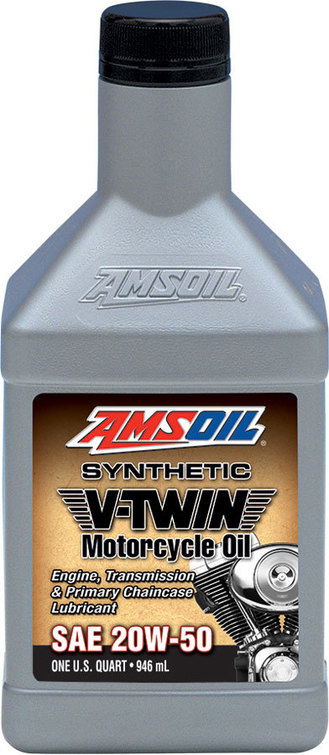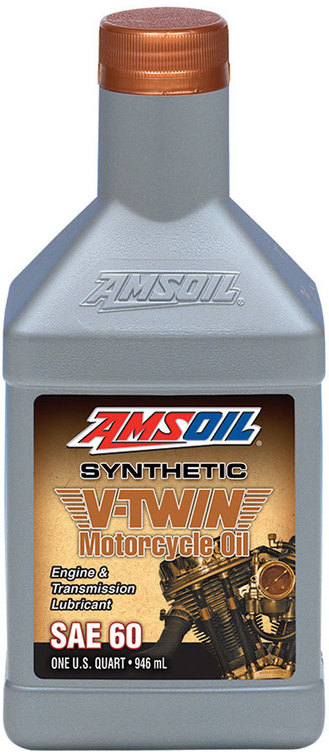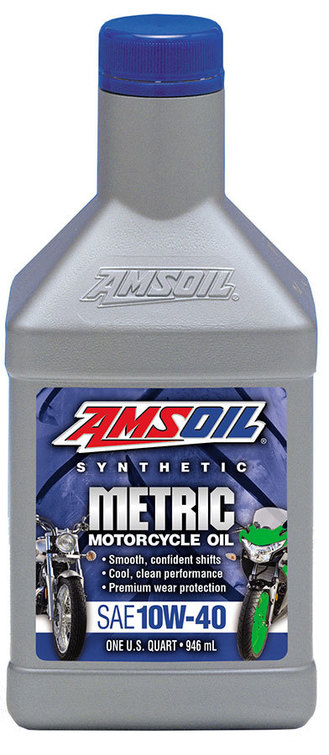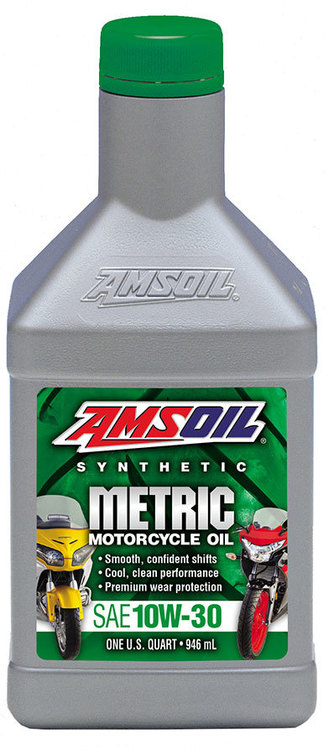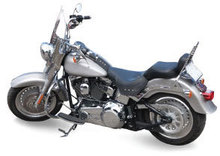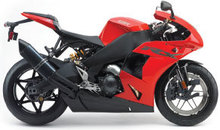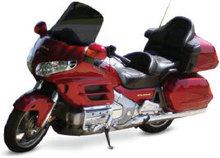How A Motorcycle Wet Clutch Works
Wet clutches are widely used in motorcycles and dirt bikes. The term simply means the clutch is lubricated with oil, as opposed to a dry clutch. A wet clutch typically lasts longer and is more forgiving to operate than a dry clutch.
Frictional Performance Vital
The clutch connects the engine and transmission via a series of alternating friction and steel plates. Friction plays a big role in proper clutch operation.
To illustrate, imagine sitting aboard a motorcycle or dirt bike with the clutch lever activated, idling at a red light or in a starting gate. The friction and steel plates are separated, allowing the bike to run without moving. The light turns green or the gate drops. As you let out the clutch lever, the plates squeeze together. The transition from the friction and steel plates spinning independently to becoming locked together is an example of dynamic friction. Once the plates are locked together and spinning in unison, they’re subject to the principles of static friction.

Oil Chemistry Important
Motor oil plays a vital role in both areas. The formulation influences the dynamic friction you experience, which is best thought of as clutch feel. Oils with incorrect frictional properties can result in inconsistent or “loose” clutch feel. This negatively affects your ability to confidently pull away from a red light without the bike cutting out, or start quickly and grab the holeshot in a race. The oil also contributes to the holding power, or static friction, between the plates once the clutch lever has been let all the way out and you’re riding. Oils with incorrect frictional properties can allow the plates to slip in some circumstances, which you’ll feel as lost power to the ground. A powerful V-twin riding up a hill, for example, can generate sufficient load to cause the clutch plates to slip and the bike to surge.
The oil’s additive chemistry has the greatest effect on performance. Friction modifiers, added to some passenger car/light truck motor oils to maximize fuel economy, can decrease the coefficient of friction within the clutch pack and result in excessive slippage. Extreme-pressure additives, commonly used in gear lubes to protect against shock loads and intense pressures, can cause excessive clutch slippage and related damage.
The key is to use a lubricant specifically formulated for wet clutches. AMSOIL Synthetic V-Twin Motorcycle Oil and Synthetic Metric Motorcycle Oil contain no friction modifiers or extreme-pressure additives. They’re dialed-in with the correct frictional properties to promote smooth shifts and consistent clutch feel while guarding against wear for long clutch life.
Use Motorcycle Oil in Your Bike for the Best Protection
Motorcycle engines and automotive engines function differently, and the lubricants that service them have different requirements. Six crucial differences between motorcycle and automotive engines are outlined below to illustrate why oil engineered for motorcycles is the best choice for your bike.
Operational Speed
Motorcycles tend to operate at engine speeds significantly higher than automobiles. This places additional stress on engine components, increasing the need for wear protection, and subjects lubricating oils to higher loading and shear forces. Elevated operating rpm also promote foaming, which can reduce an oil’s load-carrying ability.
Compression Ratios
Motorcycles tend to operate with higher engine compression ratios than automobiles, which places additional stress on engine components and increases engine operating temperatures, placing greater demands on motorcycle oil to reduce wear. Higher operating temperatures also promote thermal degradation of the oil, reducing its life expectancy and accelerating the formation of engine deposits.
Horsepower/Displacement Density
Motorcycle engines typically produce more horsepower per cubic inch than automobile engines, which exposes the oil to higher temperatures and stress.
Variable Engine Cooling
In general, automotive applications use a sophisticated water-cooling system to control engine operating temperature. Similar systems can be found in motorcycle applications, but most are air-cooled or use a combination air/oil design. Operating temperatures in air-cooled bikes can skyrocket in stop-and-go traffic, promoting oxidation and causing oil to thin, reducing their load-carrying ability.
Multiple Lubrication Functionality
Many motorcycles have a common sump supplying oil to both the engine and transmission. In such cases, the oil is required to meet the needs of both the engine and the transmission gears. Many motorcycles also incorporate a wet clutch within the transmission that uses the same oil.
Inactivity
Whereas automobiles are used on a daily basis, motorcycle use is usually periodic and, in many cases, seasonal. These extended periods of inactivity place additional stress on motorcycle oils. In these circumstances, rust and acid corrosion protection are of critical concern.No matter the conditions or the bike, AMSOIL synthetic motorcycle oils deliver the premium protection and performance your bike deserves. They are designed to control oxidation and maintain viscosity at higher temperatures, promote consistent clutch feel and lengthen clutch life, reduce engine stress and control wear and deposits in high-compression, high-temperatures motorcycle applications. V-twin or metric, AMSOIL has you covered.
AMSOIL SYNTHETIC MOTORCYCLE OIL
AMSOIL 20W-50 Synthetic V-Twin Motorcycle Oil is a premium oil designed for those who demand the absolute best lubrication for their motorcycles. It is the result of extensive research and is specially formulated to excel in all areas unique to motorcycles, including the high temperatures of air-cooled engines such as Harley-Davidson* V-twins, wet-clutch lubrication, extreme-pressure regions of gears and chains and rust common to short trips and storage.
AMSOIL 20W-40 Synthetic V-Twin Motorcycle Oil provides Indian and Victory riders with the confidence and security that comes with receiving maximum protection and performance for their bikes. It presents a premium alternative to higher-priced manufacturerbranded oils.
SAE 60 Synthetic V-Twin Motorcycle Oil features superior heat resistance and wear protection. It is shear-stable and helps maintain proper oil pressure in elevated temperatures. It stops viscosity breakdown (loss), protects gears and chains, and meets SAE 140, API GL-1 gear oil requirements. It is multi-functional and fulfills the requirements of both domestic and foreign motorcycles. SAE 60 Synthetic V-Twin Motorcycle Oil outperforms other conventional and synthetic motorcycle oils.
 The AMSOIL V-Twin Oil Change Kit (HDCK) combines everything needed to perform an AMSOIL oil change on most 1999-2016 Harley-Davidson* motorcycles in one convenient package.
The AMSOIL V-Twin Oil Change Kit (HDCK) combines everything needed to perform an AMSOIL oil change on most 1999-2016 Harley-Davidson* motorcycles in one convenient package.The AMSOIL V-Twin Oil Change Kit includes the following:
(4) quarts of AMSOIL 20W-50 Synthetic V-Twin Motorcycle Oil (MCV)
(1) chrome AMSOIL Ea® Motorcycle Oil Filter (EaOM134C)
(1) O-ring for the drain plug
Motorcycle Oil FAQs
-
Yes. Using AMSOIL synthetic motorcycle oil has no effect on motorcycle warranties. A federal law called the Magnuson-Moss Act (1975) prevents original equipment manufacturers from putting conditions on warranties attached to any product or service identified by brand, trade or corporate name, unless the manufacturer provides that product or service free of charge. This means consumers have the freedom to use aftermarket products of their choice without fear of losing the original limited or implied warranty. For additional information, visit www.amsoil.com/warrantysecure, or contact the AMSOIL Technical Department at (715) 399-TECH (8324) or [email protected].
-
No. Extending oil change intervals will not void new motorcycle warranties. To affect the motorcycle warranty, it must be determined that the lubricant was directly responsible for the failure; if the oil didn’t cause the problem, the warranty cannot be voided, regardless of brand or length of time in use. For additional information, visit www.amsoil.com/warrantysecure, or contact the AMSOIL Technical Department at (715) 399-TECH (8324) or [email protected].
-
AMSOIL 20W-50 Synthetic Motorcycle Oil and SAE 60 Synthetic Motorcycle Oil are the most commonly recommended oils for Harley-Davidson applications. Check the AMSOIL Motorcycle Product Lookup for specific recommendations.
-
AMSOIL 10W-40 Synthetic Motorcycle Oil contains a robust additive package designed for the extreme pressures and high temperatures common in motorcycle applications. Its high TBN retention also makes it the appropriate choice for extended drain intervals. In scooter applications, Formula 4-Stroke 10W-40 Synthetic Scooter Oil is the more economical choice.
-
For the newer Big Twins, AMSOIL recommends 20W-50 Synthetic Motorcycle Oil (MVC) in the engine, transmission and primary chaincase. As secondary recommendations, Synthetic V-Twin Transmission Fluid (MVT) may be used in the transmission, and Synthetic V-Twin Primary Fluid (MVP) may be used in the primary chaincase. In older Harleys such as Knuckleheads, Panheads and Shovelheads, AMSOIL recommends SAE 60 Synthetic Motorcycle Oil (MCS).
-
Yes. AMSOIL synthetic motorcycle oils meet JASO MA2 friction requirements for use in wet-clutch applications.
-
AMSOIL Synthetic Chaincase & Gear Oil does not have the correct viscosity for use in Harley- Davidson primary chaincases, and is not recommended for these applications. AMSOIL 20W-50 Synthetic Motorcycle Oil (MCV) is the primary recommendation for Harley- Davidson primary chaincases. The secondary recommendation is AMSOIL Synthetic V-Twin Primary Fluid (MVP).
-
AMSOIL 20W-50 Synthetic Motorcycle Oil is engineered with premium additive packages specifically designed to provide high performance in motorcycle engines, transmissions and primary chaincases. However, if a customer does not want to use it in all three sumps, AMSOIL Synthetic V-Twin Transmission Fluid (MVT) and Synthetic V-Twin Primary Fluid (MVP) are secondary recommendations.
-
AMSOIL synthetic motorcycle oils are engineered to provide outstanding protection for up to twice the manufacturer’s recommended change interval or one year, whichever comes first. Unless using an AMSOIL Ea Motorcycle Oil Filter, change the filter based on the manufacturer’s recommended interval. For Big Twin Harley-Davidson transmissions, follow the Harley-Davidson recommended drain interval for synthetic oil up to 20,000 miles or one year, whichever comes first.
-
Yes. In addition to withstanding extreme pressure, protecting against rust and withstanding high temperatures, motorcycle oils must be compatible with wet clutches. AMSOIL synthetic motorcycle oils are designed to meet the unique frictional requirements necessary for wet-clutch compatibility and provide maximum protection and performance in these applications.
-
AMSOIL offers motorcycle oils in different viscosities to accommodate the differences between motorcycle models and manufacturers. Just as in automotive applications, motorcycle engines require specific oil viscosities for optimal performance and protection based on the components and tolerances in the engine. Check the AMSOIL Motorcycle Product Lookup for specific recommendations.
CONTACT
LOOK UP A VEHICLE
